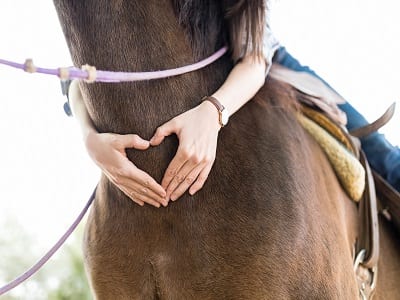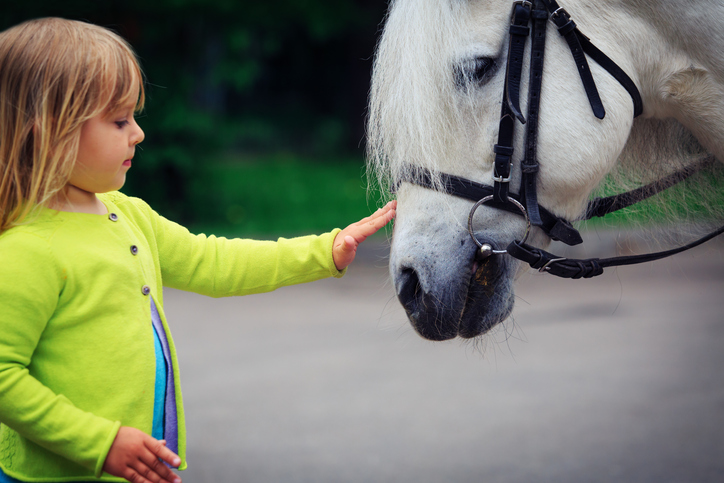Our Equine & Canine Light Therapy Pads use two specific wavelengths that research has shown to dramatically increase the rate of healing. The lights must be specific wavelengths. The lights have specific wavelengths that are absorbed by a photo acceptor, cytochrome c oxidase within the mitochondria of the cell. The energy (photons) from the lights increases the energy within the cell and that speeds up the healing process. Now you can have the same powerful healing energy of a laser at a fraction of the cost. For more information on equine therapy in Victoria visit our website HamerEquineAssistedLearning.com.

What is equine therapy How does it work?
How Much Does Treatment Cost? Equine-assisted therapy is treatment that incorporates equine activities and/or the equine environment. Hands-on activities provide an unparalleled opportunity for the participant to build self-confidence when working with an equine partner, while improving their communication and social skills. Because equine therapy is so far outside the box, equine therapy forces many people to face a new set of communication and relationship beliefs.. Reason being that people typically learn best by doing! Read more: https://hamerequineassistedlearning.com/contact-us/
The hope being that many of the positive things learned by the individual will become tools they can use to get clean and sober (and then stay that way post-rehab). The patient can then shift the focus from their anxiety by returning to structure throughout the day. These relatively new treatments can make a big difference to the wellbeing and recovery of both children and adults.

When you ride, you develop a bond with your horse and they become familiarized with your movements, attitudes and emotions, which make them extremely effective in bonding with an autistic child and encouraging communication and interaction. Working with a horse will provide an opportunity for the client to learn new communication skills and develop as an individual. That means when you heart races, as a result of being anxious, afraid, or determined, they feel it and depending upon how they perceive it as a threat, will respond in a way that helps you understand more about yourself that another human might miss.
What is equine therapy called?
Children could thus avoid fearing punishment when they break a rule or facing the whims and discretion of the teacher, who might punish the child more severely or less severe depending on his or her mood equine therapy. Equine therapy can break through barriers to build a strong bond between a young person and a horse. Furthermore, this positive response to negative emotional arousal may offer an opportunity to break previous bad habits developed to deal with such emotions.
Riding a horse may or may not be included in a personalized program, since the main focus of equine therapy is to help individuals develop their self-control, self-esteem, sense of responsibility and self-confidence. There may be various phases where a client will solely work with an instructor, other phases where they may work solely with a psychotherapist, and other phases where both are involved in the therapy. From your first contact we will be there to help you secure effective therapy sessions with professionals who can best meet your needs.
Are there scholarships for riders? While Roberts is not the founder of therapy, many of his ideas are shared by qualified equine therapists. Whereas many programs follow one model or another, at Honey Lake we employ elements of different equine therapy approaches-and even techniques our experienced therapists and staff have developed-to best meet your individualized treatment plan. For this reason, therapy is available at certain rehab facilities as part of their complementary or supplemental behavioural therapy programs.
While different treatment facilities can have different services, the essence of equine therapy is the same. In light of high relapse rates (40 to 60 per cent) post-treatment, new therapies, like working with horses, can help to improve the odds of a successful recovery. He is learning how to steer the how, how to cue the horse to ‘walk on,’ ‘trot,’ and ‘whoa.’ We are using the motivation he gets from the horse to build upon his very limited vocabulary and working on following multi-step directions.
Horses help mirror and reflect the process and emotions that are happening within us and around us. Jeffrey and Karen L. “This is Patrick’s first experience riding horses. Unlike therapeutic horseback riding, a licensed mental health professional facilitates EFP group sessions, and, in many cases, no horseback riding is involved. These sessions turned out to be quite a change of pace from typical group therapy-but not just because they involved horses. Horses allow us and create openings to build relationship with them, ourselves, others, and nature.
Horses are in nature very empathetic, and studies say that being around horses changes human brainwave patterns. Participants interact with horses while completing all activities on the ground in an outdoor corral while working with certified educators, equine specialists and trained volunteers. And they increase their ability to process the challenges they’re facing, while engaging in a variety of ground-based activities throughout their treatment. If the addiction is gentle, or perhaps when you have a solid support structure available both at home and possess your current addiction generally in order, you might not require the particular arduous placing of your home treatment center.
For years, Equine Light Therapy® and Canine Light Therapy™ have been helping animals stay stronger for competition and recover faster by putting the power of healing in a simple, easy to use tool for everyday treatment. The same way humans rarely succeed in engaging other animals with yelling, snapping fingers, threatened, or stampeded feet, horses are not very responsive to those actions. Clients can be asked to lead horses in a ring without making physical contact with the horse during a session.
Equine therapy is defined as an experiential form of therapy that incorporates horses. Equine Sport Therapy program is offered as a 2 year certification course at the Barrhead, Alberta OR Vanscoy, Saskatchewan Campus locations. “The equine therapy program at Columbia also doesn’t ask veterans to address their traumas directly, as traditional treatments often do. While traditional equine therapy approaches can address these goals, the therapy offers another avenue to learn these skills.
Learning to understand horse behavior can help people learn the way their behavior impacts others. Something about the gentle, patient nature of a horse helps rebuild confidence and trust in people who suffer from psychological or physically debilitating issues. Many of the people the team serves have experienced significant trauma in their lives - emotional, physical or both - and they often suffer from lasting effects and mental health disorders. Have faith in yourself. Like our Facebook page!



